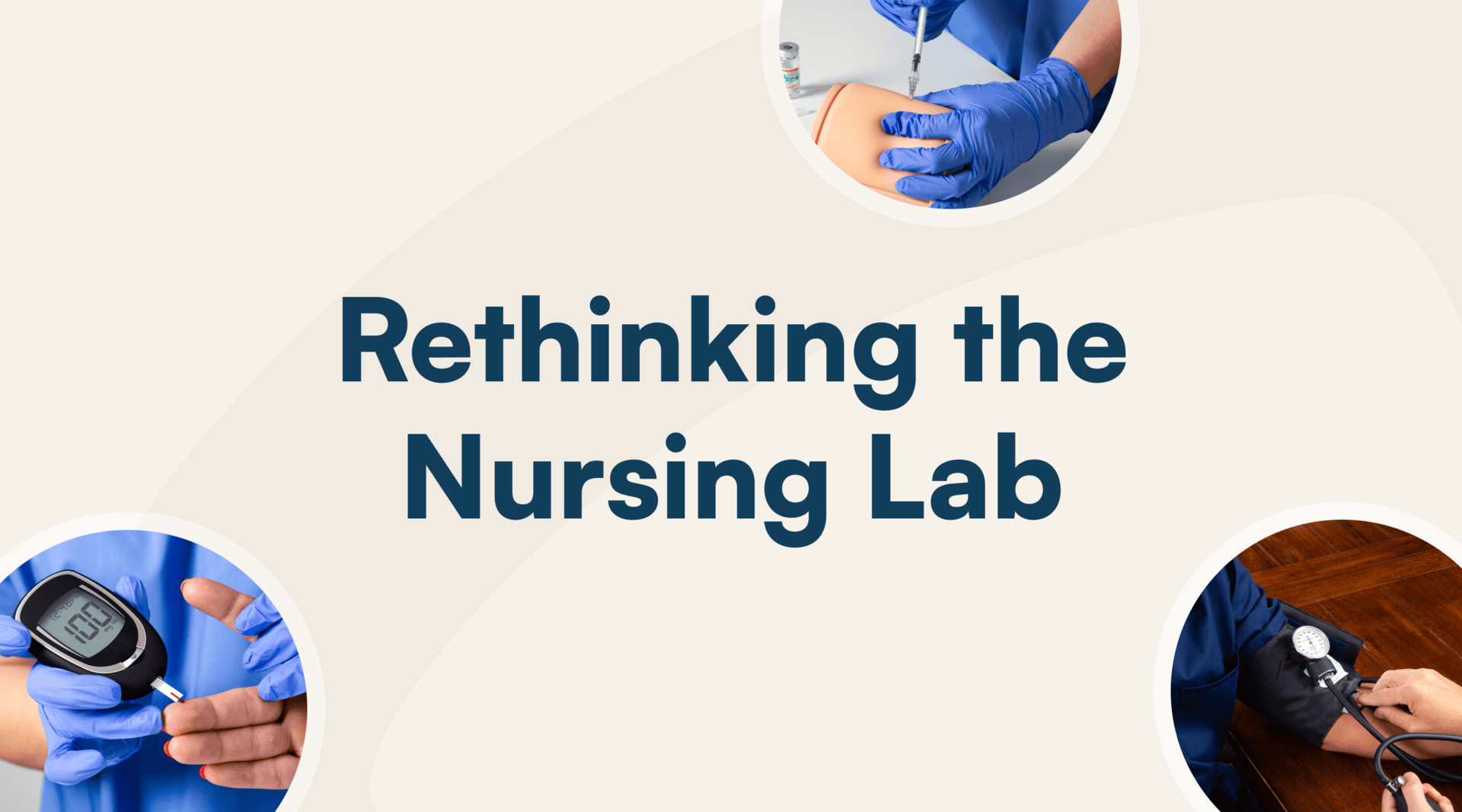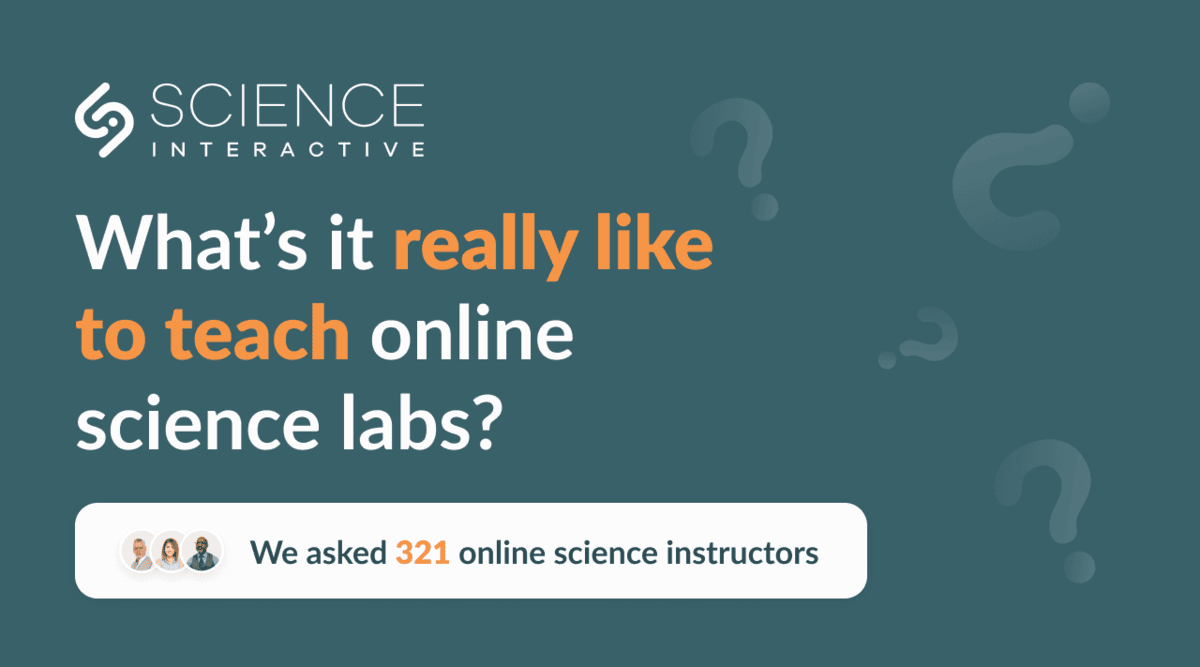Never in your wildest dreams could you have imagined taking a lab course online when you were in college, right?! How could that ever work? But times have changed, and as student demand for online and hybrid learning continues to grow, amid declining enrollment in traditional F2F courses, it’s clear online learning is critical for higher education, even in STEM.
In fact, online STEM courses are proving to be a viable source for growing enrollment, with growing interest in and demand for online lab courses. So we set out to get the inside scoop from the instructors actually teaching these courses. In our first Annual Lab Report: The State of Online Science Labs, we surveyed 321 instructors teaching online labs, and they shared what it’s really like to teach online lab courses—discussing the unique challenges they face as well as the strategies they use to successfully deliver online labs comparable to a F2F lab experience.
Survey Says…Quality, Cost & Student Support Matter
The instructor’s perspective provides valuable insight into the challenges, concerns, and support required to make online lab courses successful. As the coach, mentor, and community builder of the course, the instructor’s job is to create an engaging and effective learning experience online, in a discipline that has not traditionally been delivered online — that’s no easy feat. So we wanted to find out the top priorities these instructors’ focus on to ensure an effective online lab experience—and these 4 quickly bubbled to the top.
1. Creating a Learning Experience Comparable to On Campus
Online science instructors face clear challenges, including difficulty replicating the engaging hands-on learning of on-campus labs, as well as ensuring the quality & rigor of materials, content accessibility, and academic integrity of online labs. Of all of these challenges, our surveyed instructors cited the following as their top two:
- the ability to recreate a hands-on lab experience (41%)
- ensuring the quality & rigor of course materials (26%)
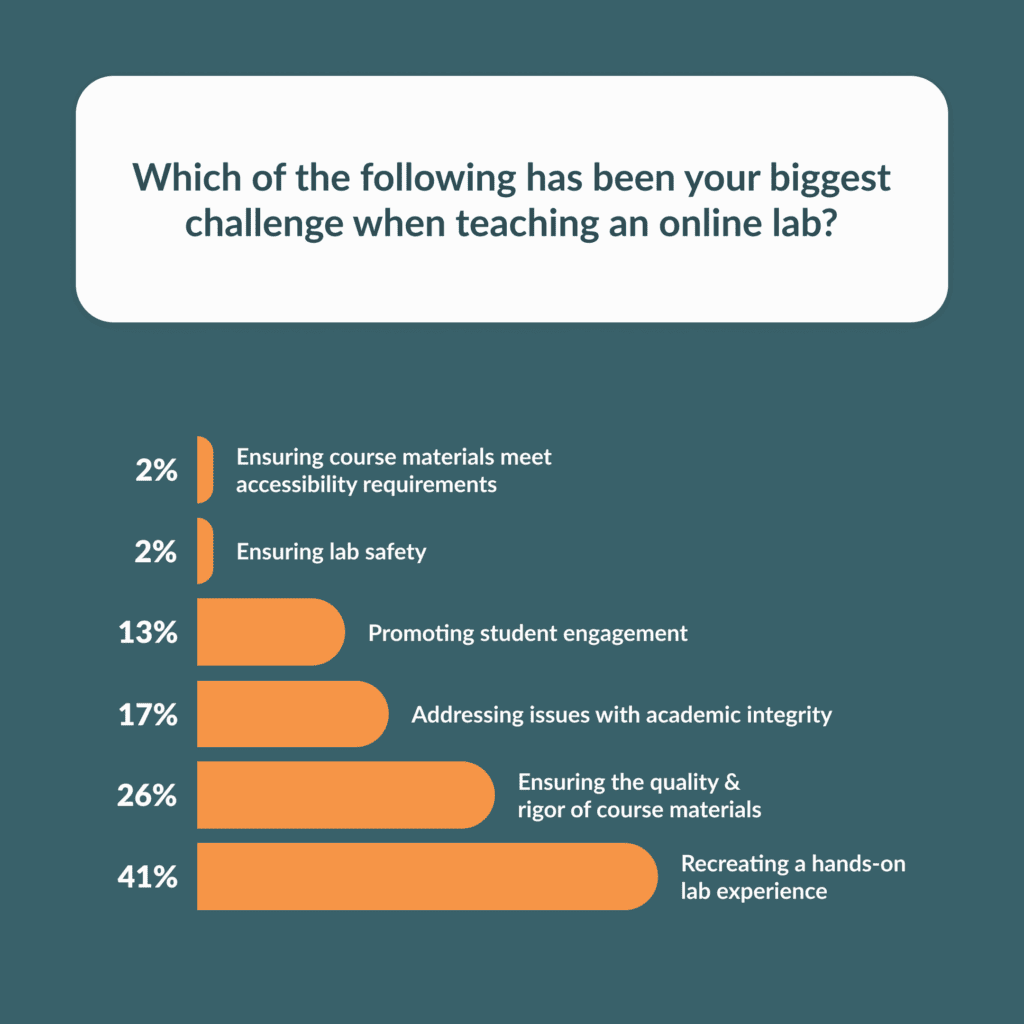
Still, nearly 80% of the instructors surveyed said they were satisfied with their overall online lab experience. In fact, the majority said that adopting hands-on labs turned out to be the most effective way to recreate the on-campus lab experience AND ensure the same level of quality and rigor online.
71% of instructors using hands-on labs felt their labs were comparable to an in-person experience
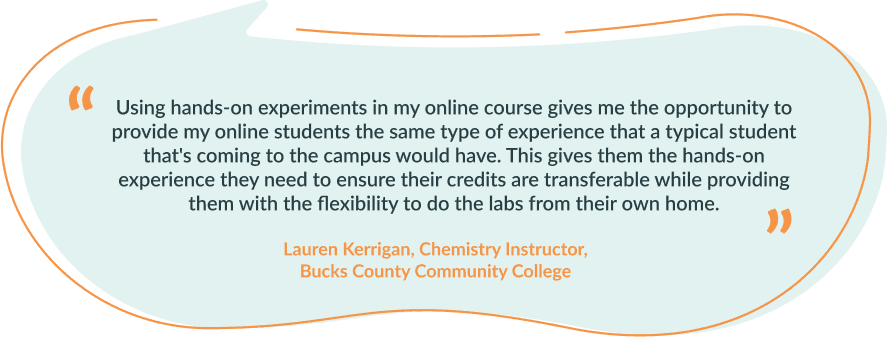
2. Ensuring a Quality Student Learning Experience Online
Perhaps one of the most important considerations for instructors, lab formats ends up playing a key role in the quality and effectiveness of your course.
84% of instructors said they prefer incorporating hands-on labs into their online courses.
With hands-on labs, you can provide a more interactive learning experience that engages learners and encourages them to apply what they have learned to the real world. In fact, instructors indicate that including a hands-on component supports better outcomes and leads to a higher quality learning experience.
85% of instructors using hands-on labs were confident students could apply what they learned to the real world, while a whopping 82% of instructors using only virtual simulations said their students would have learned more if they did hands-on labs.
“When I started teaching Anatomy & Physiology online, we used kits but the costs became prohibitive for the students and the goals of the college. After that, we used a hard copy lab manual, which matched what we use in hybrid and seated classes. It worked fine but not the best option for a fully online course.When Science Interactive approached us about a fully online lab experience, I knew we should try this. The labs tie into what we cover in class and offer students a hands-on lab experience in their own home. The kit is completely customizable to match our learning objectives, and the price point makes it a perfect addition and replacement to the hard copy lab manual. I could not be more pleased with the quality of materials and educational content of the SI lab kits for A&P.”
Donna Uguccioni, Anatomy & Physiology Professor, Cape Fear Community College
3. Balancing Costs
Yes, it’s true…hands-on labs have a cost. In fact, 22% of instructors cite cost as the reason they didn’t adopt hands-on labs.
That said, those who did opt for hands-on labs thought the cost was commensurate with the value of the experience. In fact, both instructors and surprisingly students were aligned when it came to the value and effectiveness of doing hands-on lab experiments at home. Both groups agree that students learn more when they have the opportunity to do hands-on labs at home AND the cost of doing those hands-on labs is worth the value received.
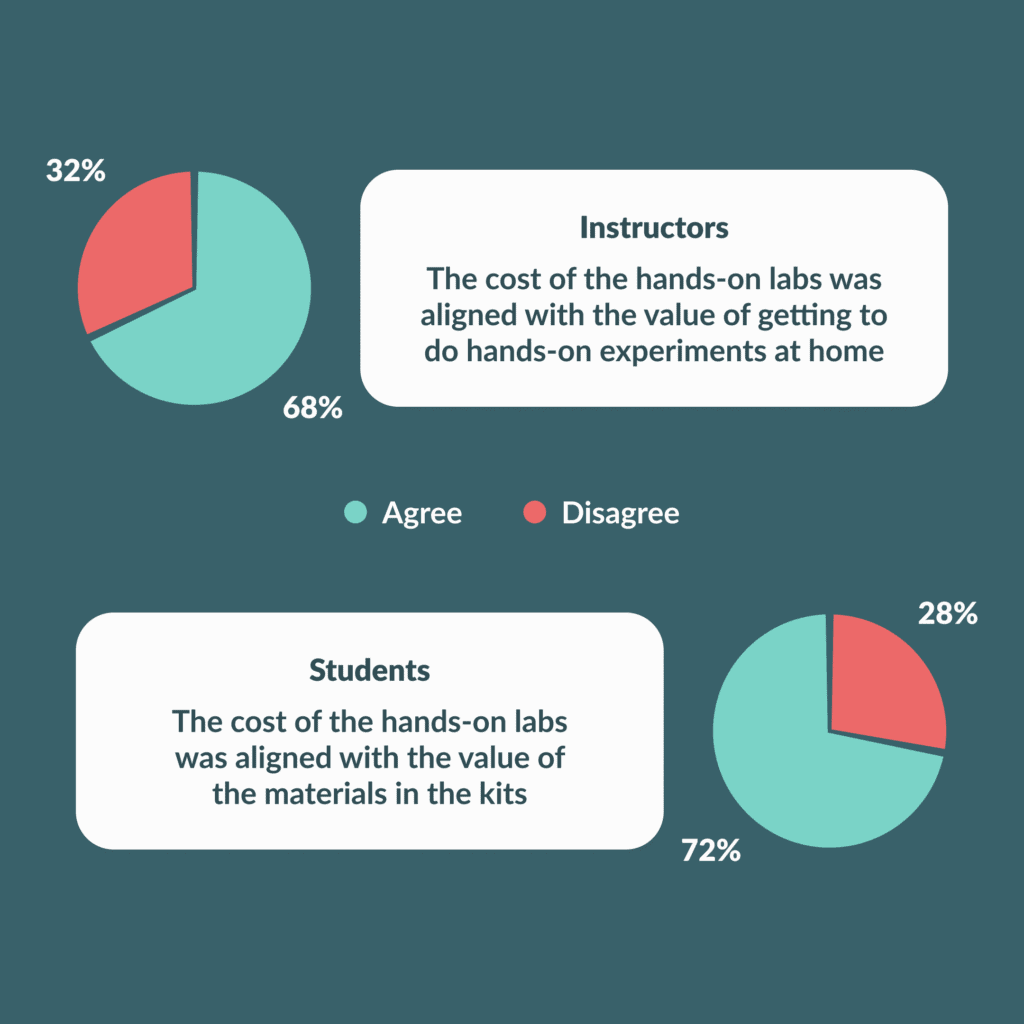
You also have to look at the total picture. As Professor of Chemistry Dr. Ryan Fealy noted, “We really try to keep costs down, and for the students taking online labs, there is a slightly higher cost, but they’re also not burning gas for a commute or having to buy lunch. It does balance out, and they’re investing money in a truly valuable experience.”
When you consider the full cost of attending on-campus lab courses for both students (commuting, opportunity costs, child care, etc.) and programs (lab space cost, resources, and sourcing lab materials), hands-on labs done at home can prove to be more cost effective. But if cost is still a hang up, consider different options for offsetting those costs, including shifting to open source textbooks, using a lab fee, and incorporating some virtual simulations where it makes most sense.
4. Access to Support
Finally, as with most things, to be successful and effective, it takes a village! Just as important as the support students need from instructors to succeed in their courses, instructors need the same from their institution.
Whether a new or seasoned online instructor, you need access to and training in the tools, resources, and professional development required to deliver online labs effectively. In fact, according to the CHLOE 8 report, 54% of COOs report that formal training by the institution is required for faculty to teach online, while 14% indicated that their institution had no specific standards or process required for faculty to teach online. What’s clear is that the amount and quality of resources, support, and professional development instructors have can directly impact student success.
The Annual Lab Report: State of the Online Science Lab in 2023
In the end, delivering an online science lab course that provides a meaningful and authentic learning experience requires work, time, and effort. But the payoff is so worth it…a quality student learning experience that truly engages students and genuinely gets them excited about science is a win!
With a focus on building experiences comparable to the in-person lab experience, that ensure quality and rigor, balance costs, and provide instructor support, institutions have a real opportunity to attract and retain more students while expanding the reach of their STEM offerings. But this is only part of the story…we also surveyed 1,293 students taking an online lab course, and what we found out from them might just surprise you!
For the whole story, as well as actionable takeaways to help you address these key instructor priorities, download a copy of our full Annual Lab Report: State of the Online Science Lab.
Discover more articles
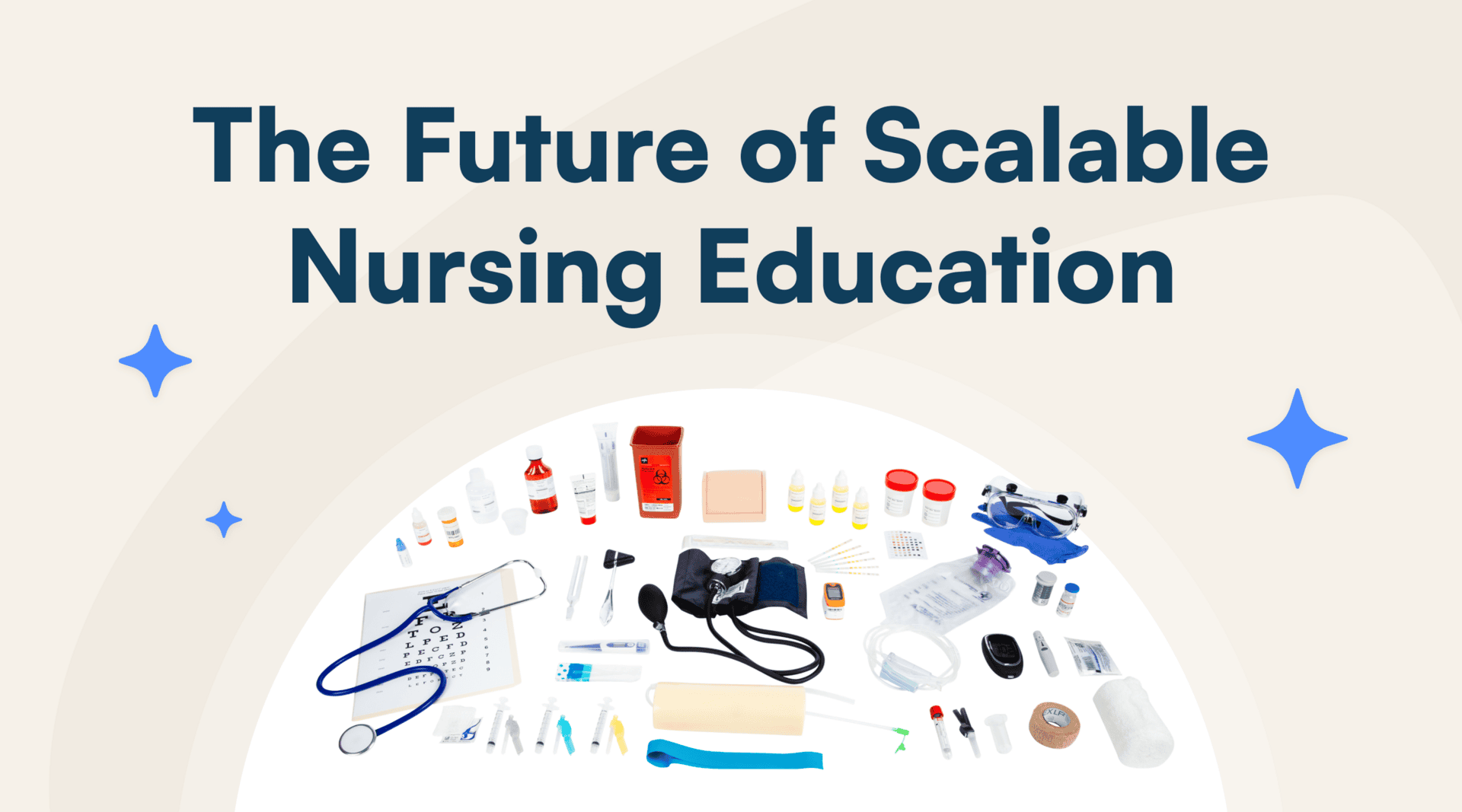
Science Interactive Launches New Nursing Fundamentals
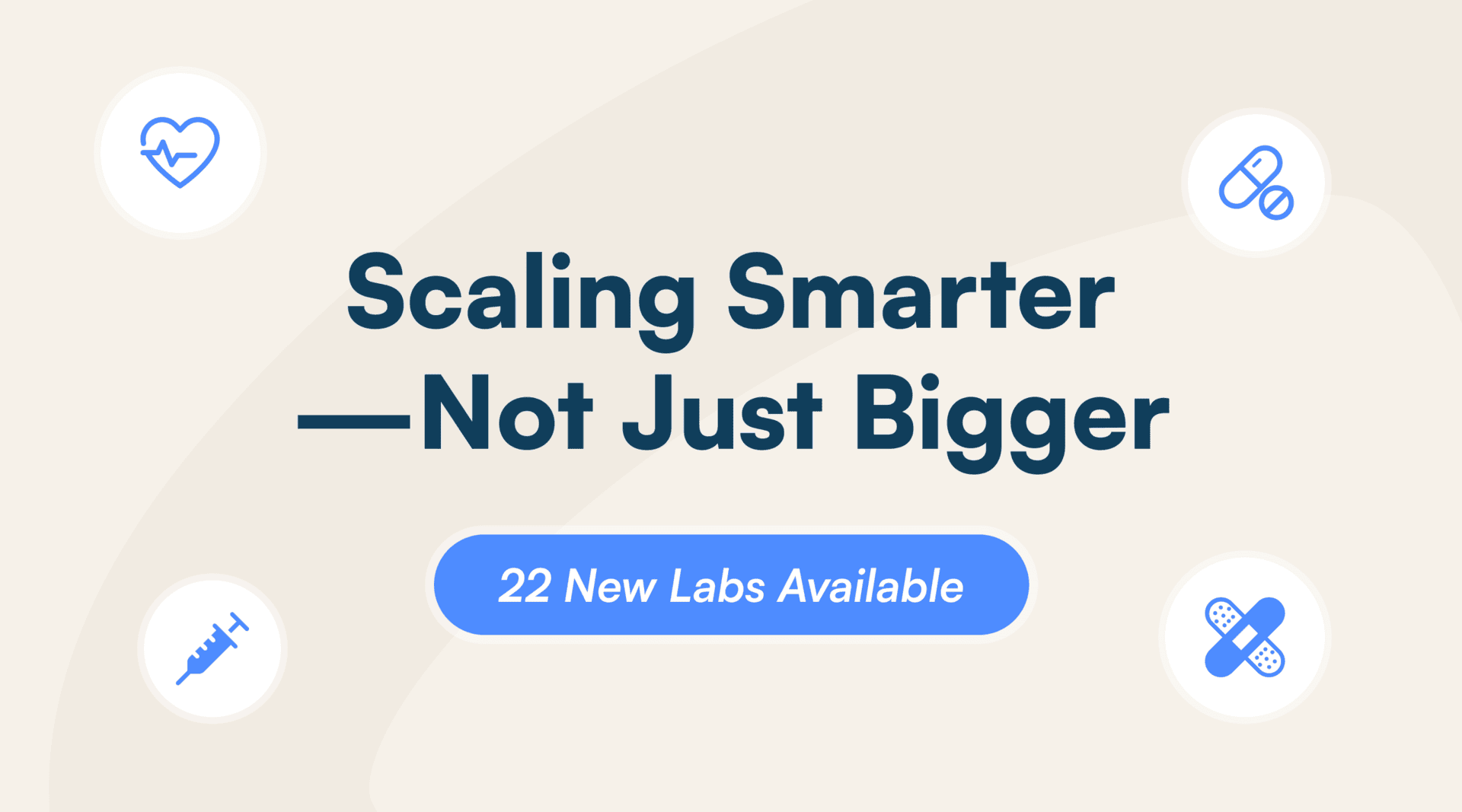
What Clinical-Ready Actually Looks Like (And How to Get There Sooner)
